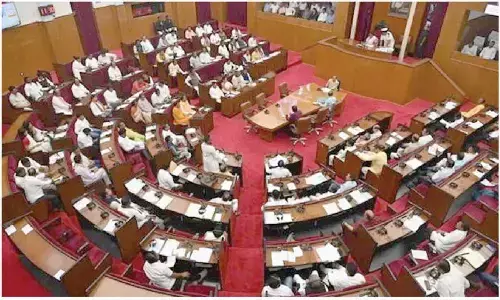Would falling interest rates affect your retirement plans?

Would falling interest rates affect your retirement plans?
As the financial year came to a close on March 31, 2021, there was a circular released by the government notifying the changes in the interest rates for various small-scale savings and that of the provident funds
As the financial year came to a close on March 31, 2021, there was a circular released by the government notifying the changes in the interest rates for various small-scale savings and that of the provident funds. There has been a drastic reduction in the rates among many schemes. There was an uproar among the opposition parties and general public alike on the reduced rates. The move, however, has been withdrawn the very next day owing to an oversight in the communication. While some expressed that the announcement was withdrawn due to political compulsions as multiple State elections are due, some think these could be temporary.
The last one year has been an extraordinary one with the pandemic ravaging the population and the government imposing strict lockdowns to contain the spread of the virus. This has impacted the economy in an adverse way. Leading into the pandemic, the Reserve Bank of India (RBI) has been cutting the interest rates and it had cut by 100bps in Feb and March of 2020 itself. A further 40 bps rate cut was announced in May 2020, taking the key rates to almost two-decade lows.
The subsequent opening up of the economy in a phased manner has initially brought back the consumption demand while the supply side bottlenecks are still being pursued. These imbalances have resulted in inflation pressures. Though, not at an alarmed level but certainly beyond the comfort zone of a conventional setup. This is not a domestic trend but has been a feature across the countries as the supply chains struggled to pace up with the growing demand.
In addition to the various fiscal measures by the govt., RBI has been on a forefront in dealing with the fallout of the pandemic restrictions by employing numerous liquidity methods and also announcing a six-month period of moratorium on existing loans. The central bank was also involved in other activities to ensure sufficient liquidity in the banking system. The government while announcing various PLI (Production Linked Incentives) schemes across sectors in an effort to boost the revival has also announced the stalling of the IBC (Insolvency & Bankruptcy Code) procedures for a year.
The Union Budget has clearly articulated the increased borrowings for the past financial year and the continued pursuit of aggressive fund raising into this year. This has led to market participants to alter the anticipations of the bargain for them with the yield spikes. The RBI has been on multiple 'operation twists', where they tried to tame the yield curve to their desired levels by trading instruments at various timelines simultaneously. This way they tried to sap the energy of the market participants.
While the demand has ramped up to pre-covid levels in many of the sectors, the supply didn't catch up to that level leading to some inflationary trend especially among commodities, etc. This global reflationary pressure has increased expectations of the market participants for a better yield than being offered, leading to completely abandoning of fresh auctions by the RBI. What investors need to acknowledge is that the reducing interest rate is not a new phenomenon but has been happening for decades and particularly evident in the last couple of decades. This is part of the unraveling global deflationary trend and India stands no exception. Moreover, the change in the accounting of borrowings (FCI from NSSF) has also put direct pressure on the government to come clean on the cost of funding. This limits the options for investors pursuing these kinds of instruments in the fixed income space.
So, what options are left out for those depending upon these kinds of securities? One could continue to invest in these with lower expectations in the coming years but carrying the sovereign guarantee or foray into other asset classes to derive better yields. Of course, the choice to continue to invest in PPF or small savings schemes is not universal and has to be dealt at a personal level. But this is certainly a wakeup call for the young investors to have a sizable equity exposure into their retirement portfolios.
The government has been making multiple efforts for retail investors get access to the debt market through offerings like Bharat 22 ETF, etc. Though this is not a guaranteed return proposition, it does fall under the fixed income category and would deliver the results in the long run although with volatility. Also, the returns are not taxed in similar ways but through capital gains. The older generation, however, have to stick with the traditional options despite lower yields.
(The author is a co-founder of "Wealocity", a wealth management firm and could be reached at [email protected])



















